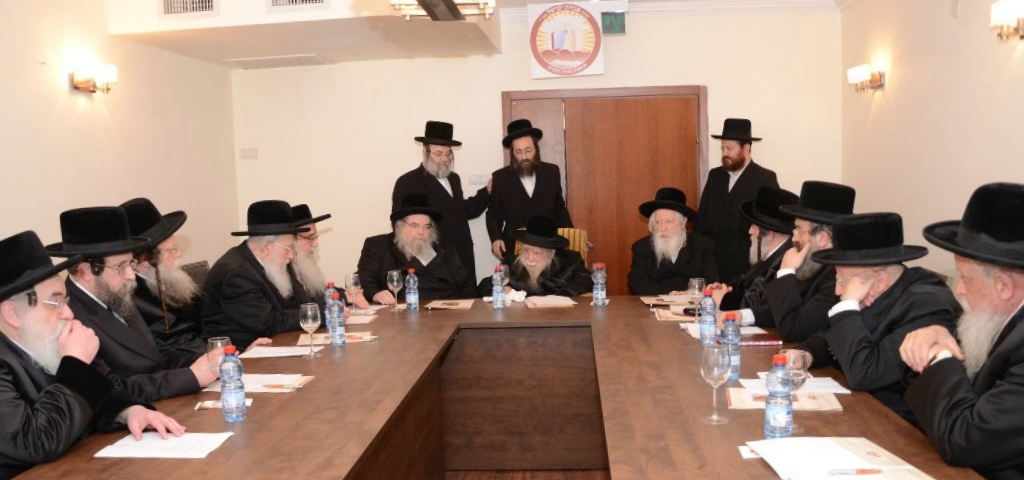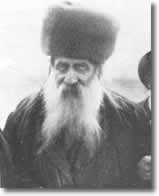|
Yaakov Yehezkiya Greenwald
Ya'akov Yechezkiya Greenwald (Hebrew: יעקב יחזקי' גרינוואלד. Legal name: Jakab Grünwald. Also called the "Vayaged Ya'akov", 1882 – c. 1 March 1941 (2 Adar 5701)) was the rabbi of the Etz Chaim community in Pápa, Hungary, and the ''rosh yeshiva'' there. He was the predecessor of the Pupa Hasidic dynasty. Early life Greenwald was born in Csorna to Moshe Grunwald, rabbi and ''rosh yeshiva'' of Khust, and studied under his father until his marriage in 1900 to his cousin Sara Rivkah Brown. Career In 1906 Greenwald was appointed rabbi of Likov. In 1912 he was appointed rabbi of Deutschkreutz, replacing his uncle Eliezer David Greenwald. In 1924 he became rabbi of Hunyad and headed a yeshiva in the city. In 1929, he became rabbi of Pápa, Hungary. He established a yeshiva there which soon numbered 300 students, and became one of the largest and most important Hungarian yeshivas. Death and succession Greenwald died in 1941 and was buried in the Jew ... [...More Info...] [...Related Items...] OR: [Wikipedia] [Google] [Baidu] |
Csorna
Csorna is a town in Győr-Moson-Sopron county, Hungary. Csorna is located near the Fertő-Hanság National Park. There are two districts in the town: the Földsziget and the Csatárimajor. Etymology The name comes from Slavic languages, Slavic ''*Cherna/Chorna'' (black), see also e.g. Čierna, Černá (other), Černá or Czarna (other), Czarna. History At 13 June 1849, during the Hungarian War of Independence of 1848 and 1849, in the Battle of Csorna the Hungarian division led by Colonel György Kmety defeated the Austrian troops led by Major General Franz Wyss, who died in the battle. The Hungarian peasants tried to help the Hungarian troops, and because of this the Austrians when they returned to Csorna on 21 June, they burned the city to punish its inhabitants. Jews Jews first settled in the town in the second half of the 18th century, at the invitation of the estate owner, count Eszterhazy. The majority were engaged in commerce, while there were some industr ... [...More Info...] [...Related Items...] OR: [Wikipedia] [Google] [Baidu] |
Moshe Grunwald
Moshe Greenwald (1853–1910), also spelled Grunwald, a rabbi in Hungary at the end of the 19th century. He was the rabbi of Chust, Hungary and progenitor of the Pupa Hasidic dynasty through his son Yaakov Yechezkiya. He was also the author of ''Arugas Habosem'', a book of responsa covering halakhic issues. Biography He was the eldest son of Amram Greenwald and studied at the yeshiva of Menachem Katz in Deutschkreutz with his grandfather Yosef Greenwald, and at the Pressburg Yeshiva under Avraham Shmuel Binyamin Sofer. His father died when he was twenty and he worked in timber trading, while continuing his studies. He married his relative Zissel Gestetner. At the age of twenty-six he began working as a rabbi in Humenné in Hungary (today in Slovakia). In 1887 he became rabbi of Kisvárda in Hungary. Greenwald was originally from a non-hasidic family but as a young man he became a hasid and was a disciple of the second Belzer rebbe, Yehoshua Rokeach.''A World That Was'', ... [...More Info...] [...Related Items...] OR: [Wikipedia] [Google] [Baidu] |
Greenwald Family
The Greenwald Rabbinic family was a family which produced several generations of Hungarian rabbis. It traces its roots to Meir Eisenstadt, the Chacham Tzvi, and the Maharal.http://matzav.com/todays-yahrtzeits-history-1-sivan The Pupa Hasidic dynasty is descended from the Greenwald family. Family members * Moshe Greenwald * Yaakov Yechezkiya Greenwald * Yosef Greenwald * Yaakov Yechezkia Greenwald II * Eliezer David Greenwald Rabbi Eliezer David Greenwald (1867 – 1928) was a rabbi and head of a yeshiva in the cities of Tzehlim (today Deutschkreutz in Austria), Oberwischau (Upper Vishuvah) and Satu Mare, Satmar in Transylvania. He is known for his book Keren L'David. ... References {{Reflist Jewish-Hungarian families Hungarian Orthodox rabbis Hungarian Hasidic rabbis 19th-century Hungarian rabbis ... [...More Info...] [...Related Items...] OR: [Wikipedia] [Google] [Baidu] |
Agudat Yisrael
Agudat Yisrael (; Ashkenazi Hebrew: ''Agudas Yisroel'') is a Haredi Judaism, Haredi Jewish political party in Israel. It began as a political party representing Haredi Judaism, Haredi Jews in Poland, originating in the Agudath Israel movement in Upper Silesia. It later became the party of many Haredi Judaism, Haredim in Israel. It was the umbrella party for many, though not all, Haredi Judaism, Haredi Jews in Israel until the 1980s, as it had been during the Mandate for Palestine, British Mandate of Palestine. Since the 1980s it has become a predominantly Hasidic party, though it often combines with the Degel HaTorah non-Hasidic Ashkenazi Haredi party for elections and coalition-forming (although not with the Sephardi and Mizrahi Haredi party Shas). When so combined, they are known together as United Torah Judaism. History When political Zionism began to emerge in the 1890s, and recruit supporters in Europe and America, it was opposed by many Orthodox Jews, who believed the J ... [...More Info...] [...Related Items...] OR: [Wikipedia] [Google] [Baidu] |
Knesset
The Knesset ( , ) is the Unicameralism, unicameral legislature of Israel. The Knesset passes all laws, elects the President of Israel, president and Prime Minister of Israel, prime minister, approves the Cabinet of Israel, cabinet, and supervises the work of the government, among other things. In addition, the Knesset elects the State Comptroller of Israel, state comptroller. It also has the power to waive the immunity of its members, remove the president and the state comptroller from office, dissolve the government in a constructive vote of no confidence, and to dissolve itself and call new elections. The prime minister may also Dissolution of parliament, dissolve the Knesset. However, until an election is completed, the Knesset maintains authority in its current composition.The Knesset Jewish Virtual Library. Ret ... [...More Info...] [...Related Items...] OR: [Wikipedia] [Google] [Baidu] |
Montreal
Montreal is the List of towns in Quebec, largest city in the Provinces and territories of Canada, province of Quebec, the List of the largest municipalities in Canada by population, second-largest in Canada, and the List of North American cities by population, ninth-largest in North America. It was founded in 1642 as ''Fort Ville-Marie, Ville-Marie'', or "City of Mary", and is now named after Mount Royal, the triple-peaked mountain around which the early settlement was built. The city is centred on the Island of Montreal and a few, much smaller, peripheral islands, the largest of which is Île Bizard. The city is east of the national capital, Ottawa, and southwest of the provincial capital, Quebec City. the city had a population of 1,762,949, and a Census geographic units of Canada#Census metropolitan areas, metropolitan population of 4,291,732, making it the List of census metropolitan areas and agglomerations in Canada, second-largest metropolitan area in Canada. French l ... [...More Info...] [...Related Items...] OR: [Wikipedia] [Google] [Baidu] |
Belz (Hasidic Dynasty)
Belz () is a Hasidic Judaism, Hasidic List of Hasidic dynasties, dynasty founded in the town of Belz in Western Ukraine, near the Poland, Polish border, historically the Crown of the Kingdom of Poland. The group was founded in the early 19th century by Rabbi Shalom Rokeach, also known as the ''Sar Shalom'', and led by his son, Rabbi Yehoshua Rokeach, and grandson, Rabbi Yissachar Dov Rokeach (third Belzer rebbe), Yissachar Dov, and great-grandson, Rabbi Aharon Rokeach, Aharon, before the Nazi invasion of Poland in 1939. While Aharon managed to escape Europe, together with his brother Rabbi Mordechai Rokeach, most of the Belz Hasidim were murdered in the Holocaust. Aharon re-established the Hasidic community in Israel following World War II. As of the 2020s, Belz has sizable communities in Israel, Western Europe, and the Anglosphere. History The founder of the dynasty was Rabbi Shalom Rokeach, also known as the ''Sar Shalom'', who was inducted as rabbi of Belz in 1817 and helped ... [...More Info...] [...Related Items...] OR: [Wikipedia] [Google] [Baidu] |
Yaakov Yechezkia Greenwald II
Rabbi Yaakov Yehezkiya Grunwald (born April 17, 1948) is an American rebbe, the current leader of the Pupa Hasidic group in the United States. Biography He was born in Antwerp, the second son of Yosef Greenwald (the last rabbi of Papa, Hungary before the Holocaust) and his second wife, Miriam Weber. When he was a child the family emigrated to the United States, where his father founded the Pupa hasidic dynasty. He is married to Bracha Frieda. He served as a dayan (rabbinic judge) and posek In Jewish law, a ''posek'' ( , pl. ''poskim'', ) is a legal scholar who determines the application of ''halakha'', the Jewish religious laws derived from the written and Oral Torah, in cases of Jewish law where previous authorities are incon ... of the Pupa hasidim, and on his father's death 1984 succeeded him as the Pupa rebbe. Most of his followers live in the United States (mainly the state of New York) and Canada, and a few in Israel and London. References {{DEFAULTSORT:Gre ... [...More Info...] [...Related Items...] OR: [Wikipedia] [Google] [Baidu] |
Jewish Cemetery
A Jewish cemetery ( ''beit almin'' or ''beit kvarot'') is a cemetery where Jews are buried in keeping with Halakha, Jewish tradition. Cemeteries are referred to in several different ways in Hebrew, including ''beit kevarot'' (house of sepulchers), ''beit almin'' (eternal home), ''beit Olam Haba, olam [haba]'' (house of afterlife), ''beit chayyim'' (house of the living) and ''beit shalom'' (house of peace). The land of the cemetery is considered holy and a special consecration ceremony takes place upon its inauguration. According to Jewish tradition, Jewish burial grounds are sacred sites and must remain undisturbed in perpetuity. Establishing a cemetery is one of the first priorities for a new Jewish community. A Jewish cemetery is generally purchased and supported with communal funds. Placing small stones on graves is a Jewish tradition equivalent to bringing flowers or wreaths to graves. Flowers, spices, and twigs have sometimes been used, but the stone is preferred be ... [...More Info...] [...Related Items...] OR: [Wikipedia] [Google] [Baidu] |
Yeshiva
A yeshiva (; ; pl. , or ) is a traditional Jewish educational institution focused on the study of Rabbinic literature, primarily the Talmud and halacha (Jewish law), while Torah and Jewish philosophy are studied in parallel. The studying is usually done through daily '' shiurim'' (lectures or classes) as well as in study pairs called '' chavrusas'' ( Aramaic for 'friendship' or 'companionship'). '' Chavrusa''-style learning is one of the unique features of the yeshiva. In the United States and Israel, different levels of yeshiva education have different names. In the U.S., elementary-school students enroll in a '' cheder'', post- bar mitzvah-age students learn in a '' mesivta'', and undergraduate-level students learn in a '' beit midrash'' or '' yeshiva gedola'' (). In Israel, elementary-school students enroll in a Talmud Torah or '' cheder'', post-bar mitzvah-age students learn in a ''yeshiva ketana'' (), and high-school-age students learn in a ''yeshiva gedola''. ... [...More Info...] [...Related Items...] OR: [Wikipedia] [Google] [Baidu] |
Bánffyhunyad
Huedin (, ; ; ) is a town in Cluj County, Transylvania, Romania. Huedin is located at the northern edge of the Apuseni Mountains. It is surrounded by the villages of Nearșova, Domoșu, Horlacea, and others. The town administers one village, Bicălatu (''Magyarbikal''). Lately, Huedin has started to be known for its ecotourism initiatives. Population At the 2021 census, Huedin had a population of 8,069. The 2011 census data of the town's population counted 9,346 people, of which 59.32% were ethnic Romanians, 28.88% ethnic Hungarians, and 11.45% ethnic Roma.Populația stabilă după etnie - județe, municipii, orașe, comune , National Institute of Statistics; accessed July 15, 2015 History The town of Huedin was fou ...[...More Info...] [...Related Items...] OR: [Wikipedia] [Google] [Baidu] |






